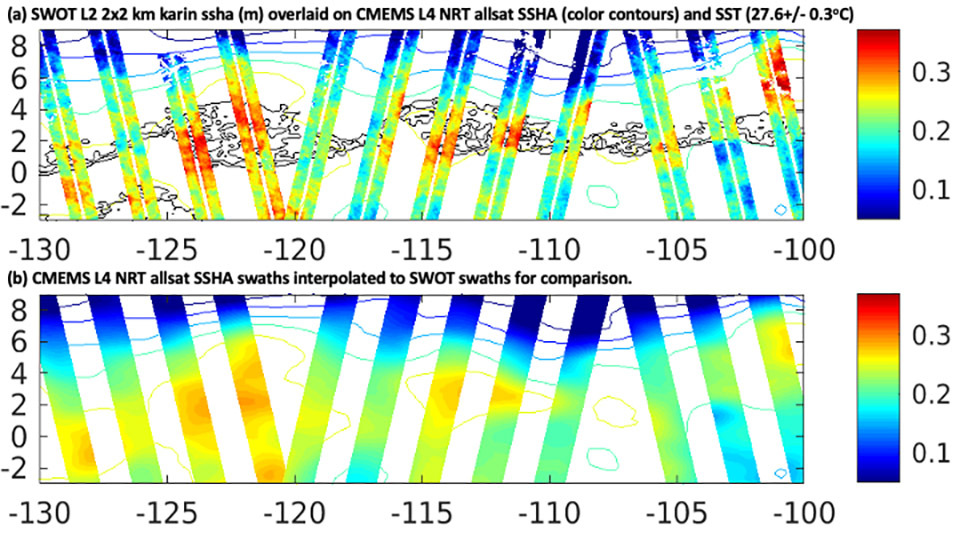Documents
TROPIC-SWOT: Submesoscale ocean currents in the tropical Pacific
Principle Investigator: Ben Whitt (NASA Ames)
Co-Investigator(s): Kydd Pollock, Santha Akella, Dimitris Menemenlis
Collaborator(s): Brian Arbic, Morgan Gilmour
The objective of this project is to use SWOT sea level observations to quantify submesoscale ocean currents and their physics in the tropical Pacific. We will address the hypothesis that submesoscale currents (10-500 km) in the tropical Pacific are modulated by, and scale up to feed back on, El Niño/La Niña, leveraging the first high-resolution two-dimensional sea-level observations during the buildup and aftermath of a strong El Niño.
The project will address the following three objectives and science questions:
- Description. Where and when does submesoscale sea level variability occur in the tropical Pacific? Are the observations consistent with simulations? Does the submesoscale sea level variability correlate with other variables such as wind speed or sea surface temperature?
- Mechanisms and Impacts. What mechanisms explain the variability of submesoscale dynamical sea level variability in the tropical Pacific? Can we use SWOT with other observations to quantify and predict tropical submesoscale currents? If so, can we quantify how submesoscales scale up to feed back on the regional dynamics and El Niño/La Niña, e.g., by driving meridional heat transport toward the cold tongue?
- Data sources, evaluation, uncertainty analysis. What data and pre-processing steps are needed? What are the uncertainties in our derived estimates?
The proposal will address these questions via a synergistic analysis of the SWOT observations, numerical simulations, and in-situ and other observations. We will confront numerical simulations with data to advance understanding of and identify solutions for high priority problems in ocean and climate prediction models. At the same time, we will use the models to help us interpret the physics of the SWOT observations, which can be difficult to understand due to the short timescales of submesoscale variability relative to SWOT's standard 21-day resample period. Finally, we will use other observations to understand the meaning of the SWOT observations and address our questions. Most significantly, we will conduct a strategic program of Lagrangian drifter deployments from the remote Palmyra Atoll in the central equatorial Pacific to significantly increase observations of surface velocity and gradients from drifters for evaluating and calibrating satellite current products in the tropics.

